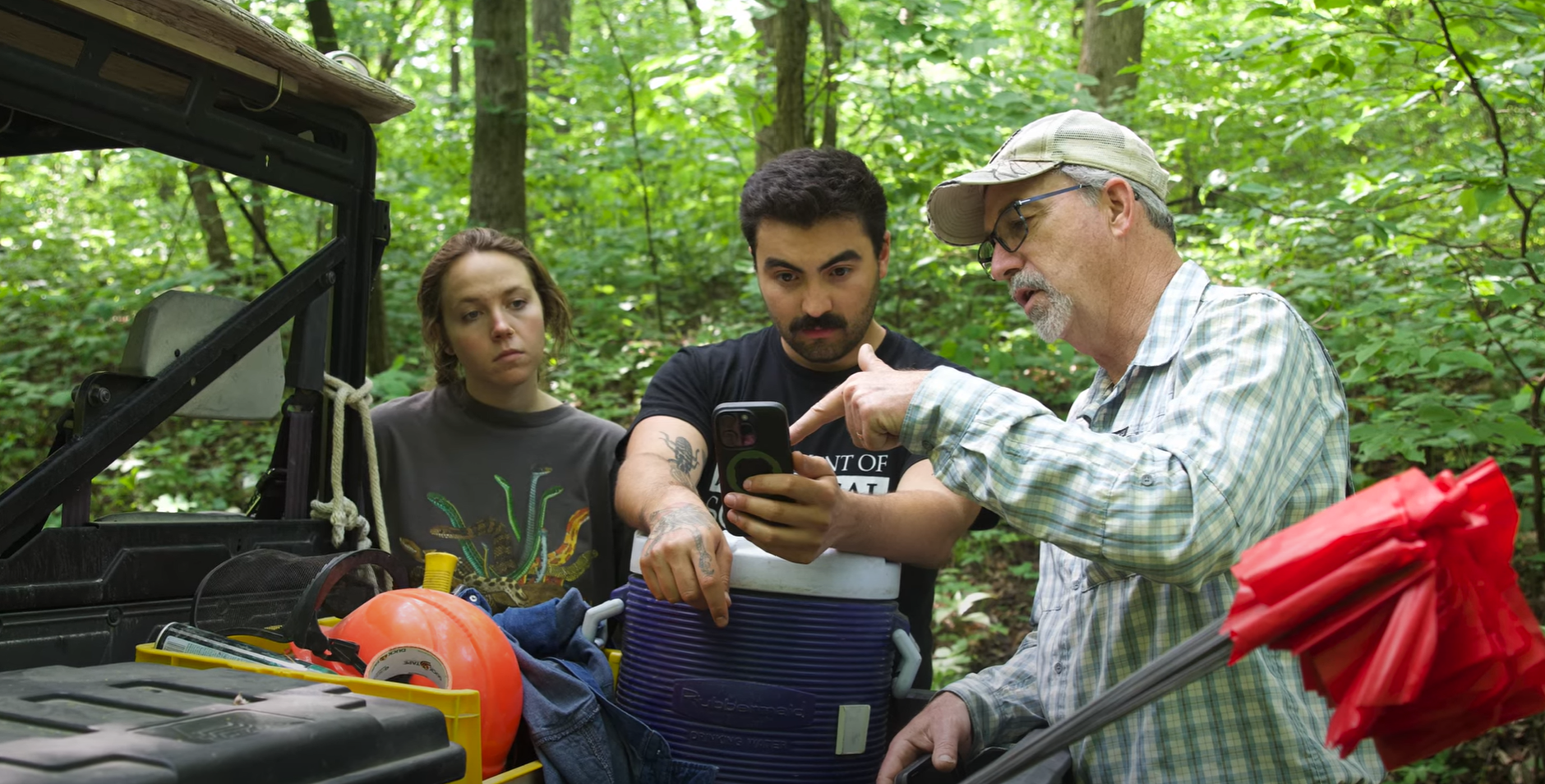By ALICIA FEYERHERM
Tiger Media Network
As the morning sun breaks through the trees on Fort Leavenworth Military Reservation (FLMR), Fort Hays State University graduate student Jacob Alexander picks up a Sherman trap and carefully removes a white-footed mouse (Peromyscus leucopus). Undergraduate student Isaac Fox documents species, sex, hind-foot and tail-length measurements before Alexander marks the specimen with a permanent marker and releases it back into the wild.
This is a typical morning for FHSU Biology researchers at Fort Leavenworth. Through a partnership with the Department of Defense, this group conducted ecological surveys on the reservation over the summer. FLMR intends to construct a wetland in the lower Missouri River basin area, but before doing so, an inventory of species needs to be collected.
“It’s a really good opportunity for us to support some student research activity and also to help the Department of Defense meet the mandates they have to consider environmental impacts as they modify and use the resources on the military base,” FHSU Biology Professor Bill Stark said.

The most recent records of reptiles and amphibians on base date back to the late 1930s and 1940s. The most recent mammal records are from the 1950s.
“Usually, you want to keep a five or ten-year cycle on documenting specimens,” Alexander said. “Timely monitoring makes it possible to identify changes that occur and allow us to investigate why the change occurred.”
Checking the 150 mammal traps is just the start of the researchers’ day. The group also installed arrays of pitfall traps to collect insects – which is Fox’s specialty.
“I’ve always been interested in entomology,” Fox said. “When I was 9 or 10, I got involved with 4-H entomology and from there, it just kind of snowballed.”
The arrays are set up in areas with native vegetation as well as areas with non-native vegetation.
“With pitfall traps, you can answer a lot of different questions,” Biology Instructor Nora Lazerus said. “It would be interesting to see if there’s differences in the diversity of insects in the native areas versus areas with invasive Bush Honeysuckle.”

After the insects are collected, they are transported back to Hays where Fox cleans, identifies and catalogs them in the collections in the Sternberg Museum of Natural History.
The third part of the research is focused on herpetology. Through Visual Encounter Surveys, the researchers methodically walk through the forested areas looking for reptiles and amphibians.
“Then we can get a bit of an idea of what we want to do in the future,” Alexander said. “What we’ll probably end up doing is setting out coverboards.”
These coverboards are large pieces of plywood that reptiles and amphibians like to crawl under. Once the coverboards are set out, the researchers can go back and flip the coverboards to see what is underneath.
Depending on grant funding, the partnership between the FHSU Biology Department and Fort Leavenworth Military Reservation could continue for several years.
“We’d like to do a long-term monitoring of different biological areas, whether that be herpetology, or mammals or the insects and so the longer we can continue to do the project, the more information and the better knowledge we have about the area,” Alexander said.



You must be logged in to post a comment.